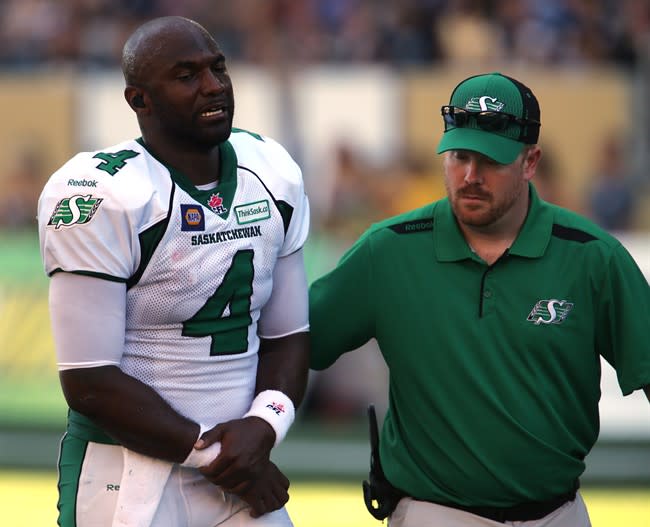CFL offence has dropped by 5.4 points and 56.4 yards per team per game in 2014. Why is that?

Much has been made of the offensive downturn in the CFL this year, but just how bad has it been? To find out, I went to the numbers. The league releases a wide variety of team stats each week every year, so with some spreadsheet-juggling, numbers from a variety of categories can be compared from 2013 and 2014, and we can see how each team has done from year to year. This is through 12 weeks, so it's how the numbers looked heading into this week's games. I also included 2012 for additional context. First off, here's how the points and points-per-game for each team have changed through 12 weeks of play over the last three years, sorted by the change from 2013-14 (Ottawa has zeros in the 2013-14 change thanks to not existing in 2013):

Thus, there have been major declines from 2013 to 2014 in overall points (-98) and points per game (-5.4), and Saskatchewan's offensive downturn has been the worst (-93 points overall, -8.5 points per game). Hamilton's looks bad from an overall perspective, but the Tiger-Cats have only played 10 games so far, so they've dropped off less than B.C., Montreal and Toronto from a points-per-game perspective. Meanwhile, Edmonton and Winnipeg are the only teams that are actually doing better from a points perspective this year than last year. It's also notable that 2013 was a better year for scoring than 2012 (+10.2 points, +0.9 points per game), so some of what makes this year stand out as so bad is that the previous one was perhaps better than normal. However, the year-to-year variation from 2013 to 2014 is over five times as much as from 2012 to 2013. (Also interesting: Calgary has been the most consistent team at scoring points over the last three years, by far.) Here are graphs summarizing those findings for each team:

Are offences struggling overall, or just at converting in the red zone? And is it the passing game or the rushing game that's led the dropoff? To find out, I compared the overall yardage numbers and the passing yardage numbers through 12 weeks of the 2012 to 2014 seasons. Here's that analysis, again sorted by the change from 2013 to 2014:

Here are graphs summarizing those findings for each team:

So, it's the decline in the passing game that's led to a lot of the lost yardage. 54 of the 56.4 yards the average team has lost per game can be accounted for that way. Interestingly, that's not thanks to a new, offensively struggling team in the 1-9 Ottawa Redblacks; their passing yardage is solidly middle-tier, reinforcing that passing yardage alone hasn't been highly correlated with winning this year. It's established teams like Saskatchewan and Hamilton leading the decline. Moreover, the Roughriders have been last in the 2013-14 change in every single category here: points lost, points per game lost, yards lost and passing yardage lost, so a substantial portion of the overall offensive decline is about them.
There are a few interesting anomalies, though. For example, Edmonton's passing game has gotten worse since last year (-15.5 yards per game), but their overall offence has improved by 13.7 yards per game, so their rushing attack is getting much better. Conversely, Winnipeg's passing game has improved substantially (+49 yards per game), but their overall offence has only gone up by 23.5 yards, meaning their rushing attack is picking up 25.5 yards less per game. Also, the three-year averages again have Calgary on top in total offence, but Hamilton is on top in passing yardage. Overall, though, passing yardage has plummeted across the league, and that seems likely responsible for most of the decline in scoring as well. That seems particularly unlikely to get better with the current waves of injured quarterbacks, and that could bode poorly for the CFL going forward.

 Yahoo Sports
Yahoo Sports 
